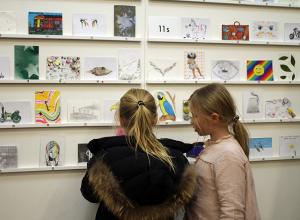
On their visit to the Courtauld's Goya to Impressionism show, our Lower Sixth Art Historians were asked to pick their favourite painting and explain their choice, as their teacher Ms Hannah Kroes explains
In May, Lower Sixth Art Historians visited the Courtauld Gallery to explore the collection and see the ‘Goya to Impressionism’ exhibition. The visit complemented their study of 19th century art in their A level, and gave students the opportunity to see works by Monet, Van Gogh, Gauguin and Cezanne which they have been studying in class. They were also able to see Manet’s ‘Bar at the Folies Bergere’ first-hand, an important case study in their A level course which they were able to discover in person.
The History of Art students each chose their favourite artwork from the gallery to research further, and have written about their experience with the artwork below.
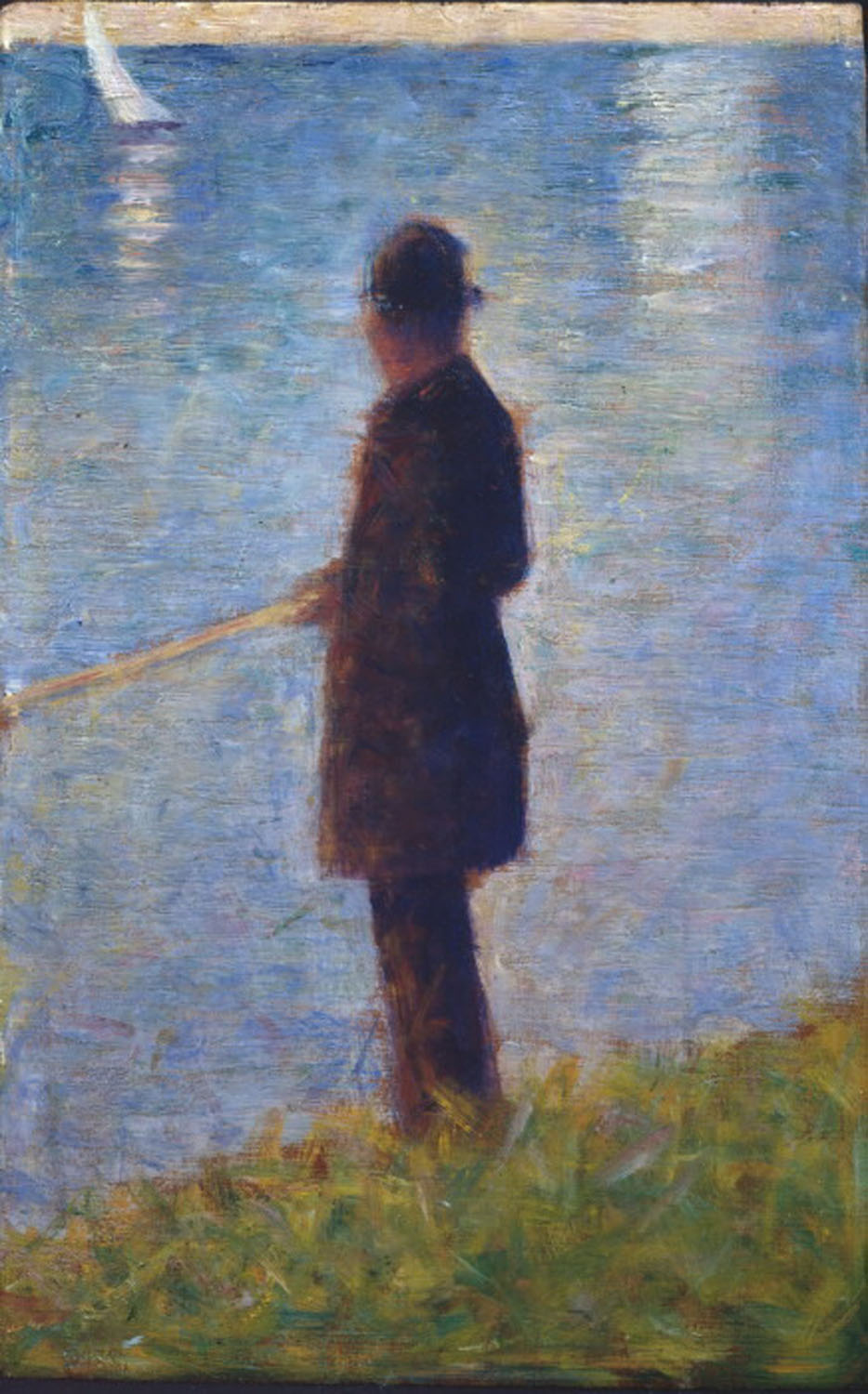
George: George Seurat - The Angler
When we entered into the Post-Impressionism section of the gallery, guided by our teacher Mrs Kroes, so many paintings demanded my attention with their bright and evocative colours — but, there was one in particular which sat hidden behind a large wall that caught my eye in a way which none of the other artworks could have. George Seurat’s “The Angler” (1884) is a relatively small painting, only 24 x 15cm, roughly the size of an envelope, yet it captivates the viewer nonetheless — though modest in scale and unassuming at first glance, the painting draws us into a meditative world where time seems to slow, shaped by the quiet presence of nature and inward thought. Unlike his later, fully developed pointillist works, “The Angler” uses a much looser, more fluid brushwork that feels spontaneous and atmospheric, creating the dream-like haze which I found so alluring. (Ironically, Seurat made over 50 preparatory studies of this painting to capture and refine its spontaneity).
In our memories, colours often appear more vivid than they were in reality, saturated by the emotions they carry — each hue is tied to a specific feeling, a moment, a trace of the past.
George, Harrodian History of Art student
The painting lacks much detail, such that we viewers can only make out the soft, warm outline of a man standing by a river’s edge — but detail isn’t necessarily important here. In fact, I believe that it’s the lack of detail which makes this painting so special: it’s vague, to the point where anybody could feel a sense of deja-vu, as if they know that very river, or that same man. This is what spoke to me in particular. It reminded me of going fishing with my grandfather in Norway on a hot summer’s day, when time seemed to be crawling by as I sat in the warmth of the sun and watched the still water of the lake for any signs of a fish. In this little painting, I believe that Seurat achieved what all other Post-Impressionists strived for their whole careers throughout the 1880s — he successfully captured the emotions present in a fleeting snapshot of life. Layers of complementary colours overlapping and merging together increase each other’s vibrancy — Seurat’s understanding of colour was influenced by Chevreul’s colour wheel, hence the emerging interest in perceived colour and opticality. Moreover, in our memories, colours often appear more vivid than they were in reality, saturated by the emotions they carry — each hue is tied to a specific feeling, a moment, a trace of the past. That is the magic of Seurat’s “The Angler”: the way in which Seurat somehow managed to create a memory through this painting.
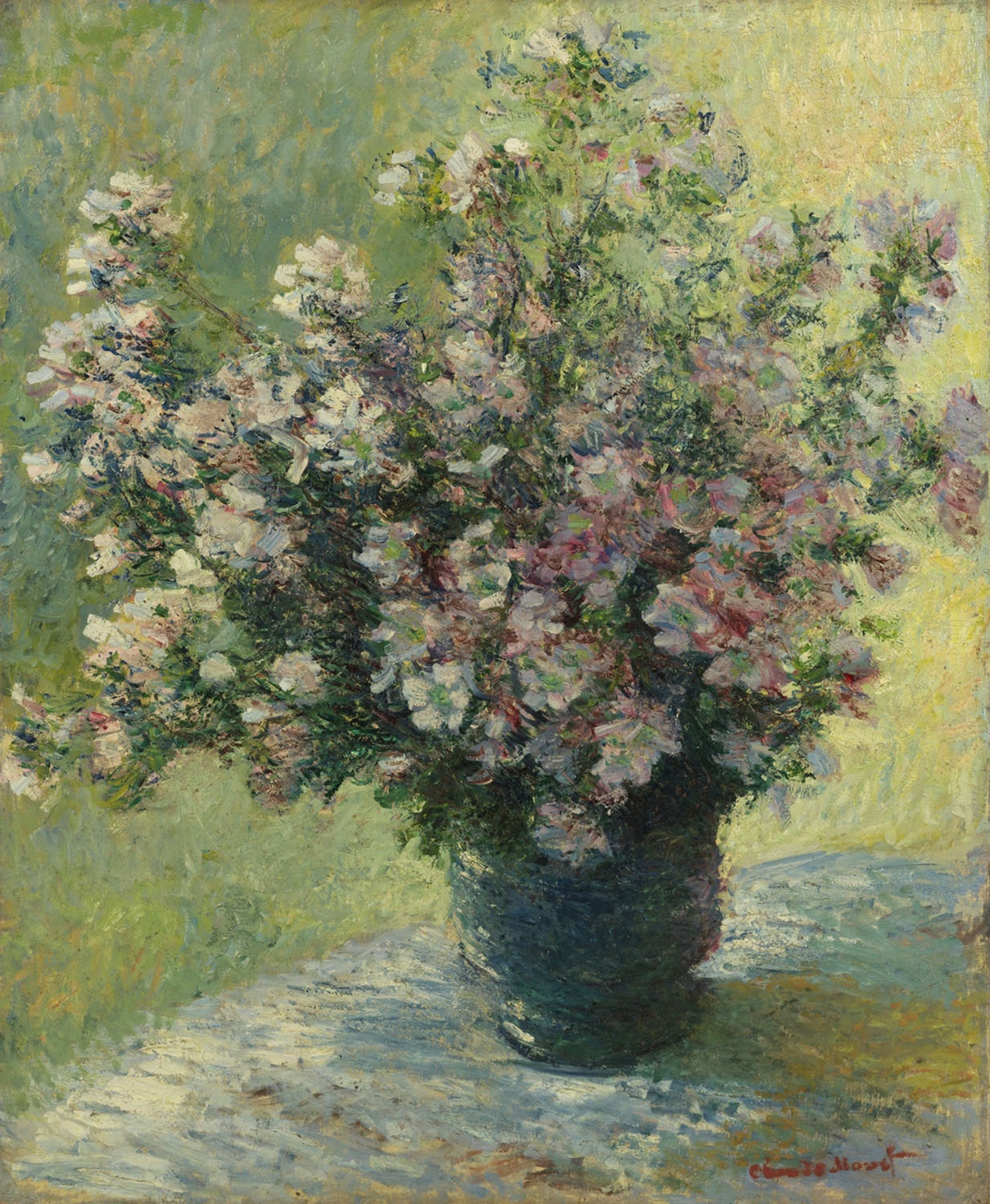
Elodie: Claude Monet - Vase of Flowers
Each flower seems to almost glow as the white and light pink highlights contrast with the dark colours in the foliage behind them.
Elodie, Harrodian History of Art student
I enjoyed seeing the painting ‘Vase of Flowers’ by Claude Monet at the Courtauld Gallery, where he captured the still vase of flowers with a sense of movement and life through the way he used painterly style brushstrokes. It was exciting being able to see the immense amount of detail up close and examine how each tiny dash of paint has been built up by him to create depth in the depiction. Each flower seems to almost glow as the white and light pink highlights contrast with the dark colours in the foliage behind them. I found it interesting being able to see the aspects of Impressionist style in real life and through this piece, in the way Monet has used contrasting colours below the vase where he has placed a deep yellow next to blue to show the shadow of the flowers as well as his use of perceived colour. The painting had an impact on me through the way it communicates a sense of both serenity and liveliness and the way each tiny brushstroke comes together to make up the beautiful scene.

Isabel: Edgar Degas - Two Dancers on a Stage
The painting that intrigued me the most in the Courtauld Gallery was ‘Two Dancers on a Stage’ by Edgar Degas. I liked the way this painting was painted slightly off centre with one of the dancers being cropped as it gives a sense of one specific moment captured instead of a posed painting. I like how dark the background is as it makes the dancers stand out more with their white tutus with flowers. Degas was associated with the Impressionist movement which broke away from traditional Academic rules and focused more on the impressions of everyday life.
I like the way Degas paints in a more realistic way... the dancers's expressions seem to give a sense of exhaustion which adds depth and meaning, as if trying to show women's struggles at the time
Isabel, Harrodian Art History student
The dancers seem to be in motion adding dynamism, which emphasises how he wanted to capture modern life. This painting reflects the modern life of Paris in the 19th C as well as focusing on the role of women and new techniques. This painting stood out to me in the Gallery as I liked the way Degas paints in a more realistic way, as they aren't perfect. Their expressions seem to give a sense of exhaustion which adds depth and meaning behind it, as if trying to show women's struggles at the time. He represents the female dancers as more human than other paintings of the female figure in the 19th C which focus on illusionism and idealisation, which I loved about this painting as it was more relatable and raw as well as expressing them in an elegant way.
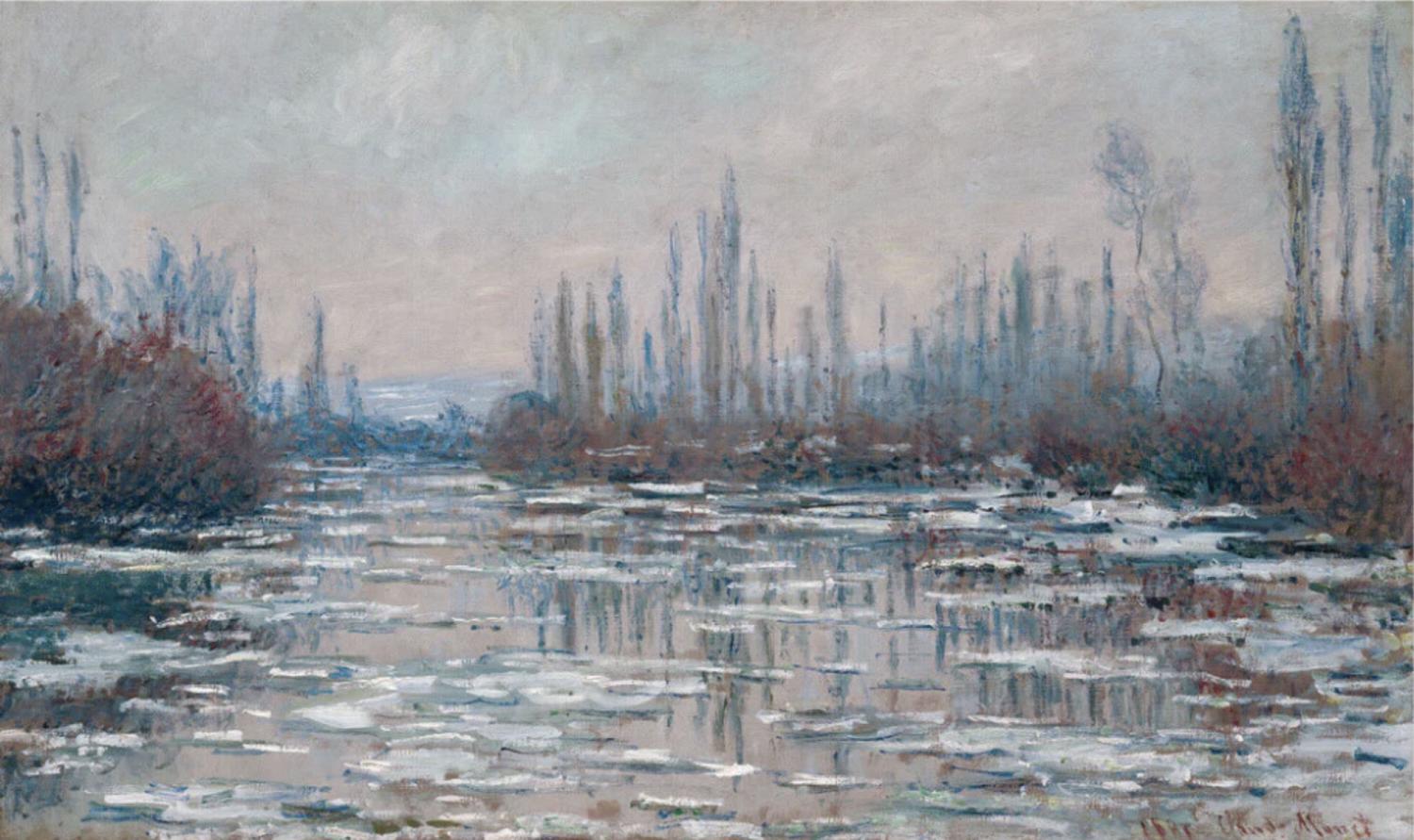
Isabella: Claude Monet - The Break-up of Ice on the Seine
One of my favourite paintings in the Courtauld Gallery was ‘The Break-up of Ice on the Seine’ which was painted by Monet. This is because the use of colour has been cleverly used to depict the temperature of the setting. This is due to the cool colour tones such as the blues, greens and purples used to identify the extremely low temperatures and suggest a chilling mood. Furthermore, there is a vertical emphasis in the middle and background due to the tall trees which tower towards the sky which are also depicted in the reflection of the water. As they surround the river it creates a sense of framing and encloses the river. This painting would link to context from the 19th century due to Monet going against the academic rules due to him not using invisible brushstrokes. We can see this mainly through the large and loose brushstrokes used to depict the ice laying upon the surface of the water. He has done this by painting thick white slabs along the surface with an ashy grey tone beneath or beside it to form a shadow which leads it to becoming more realistic to the viewer's eye.
As I viewed this painting it gave a sense of peacefulness as the setting seemed quite quiet and empty of any human activity.
Isabella, Harrodian History of Art student
As I viewed this painting it gave a sense of peacefulness as the setting seemed quite quiet and empty of any human activity. I liked this painting due to the way Monet cleverly depicts the ice as when viewed from far away it looks extremely detailed and naturalistic but in contrast when viewed up close, the detail turned into thick white brushstrokes with a few different shades to create a 3D effect. Lastly, I enjoyed the way he was able to give a sense of the chilling weather with the cool toned colour pallet which Monet decided to use to depict the setting.
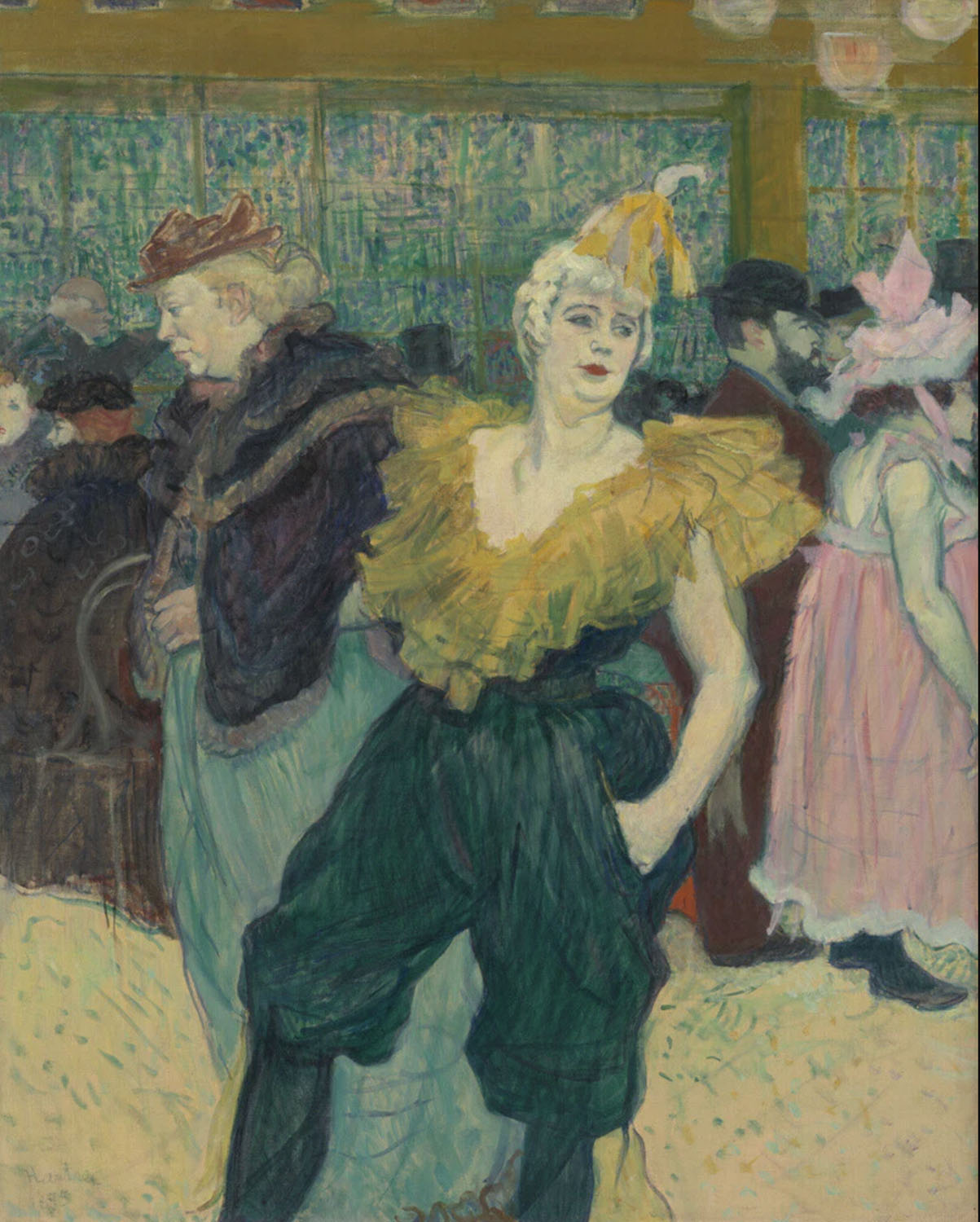
Freddy: Henri de Toulouse-Lautrec: Cha-U-Kao
Cha-U-Kao was a performer at the Moulin Rouge and one of the most mysterious figures painted by Toulouse-Lautrec. She is seen wearing the trademark costume of black knickerbocker and yellow ruff
Freddy: Harrodian History of Art student
Cha-U-Kao was a performer at the Moulin Rouge dancehall, and is one of the most mysterious figures painted by Toulouse-Lautrec. She is seen wearing the trademark costume of black knickerbocker and yellow ruff costume. The loose brushstrokes of Toulouse-Lautrec’s technique enhances the emotional depth and message behind this painting further emphasized with the vibrant colours. The dancer's gaze to the viewer is pretty direct with this expression that can be welcoming, but also there is this idea of a duality persona one as an entertainer and the other as the individual highlighting this existence of both and these social mingle events. This in my opinion highlights this vibrant outbreak of Paris nightlife in the 19th C and this lean towards individuality in people and self expression. This had a significant impact on me as it interpreted this moment of individuality for many no matter what class and this high wall dividing work and individual personality, slowly started to break down through fashion in Paris and the mixing in class disintegrating this idea of a higher social status over each other and socializing as equals.
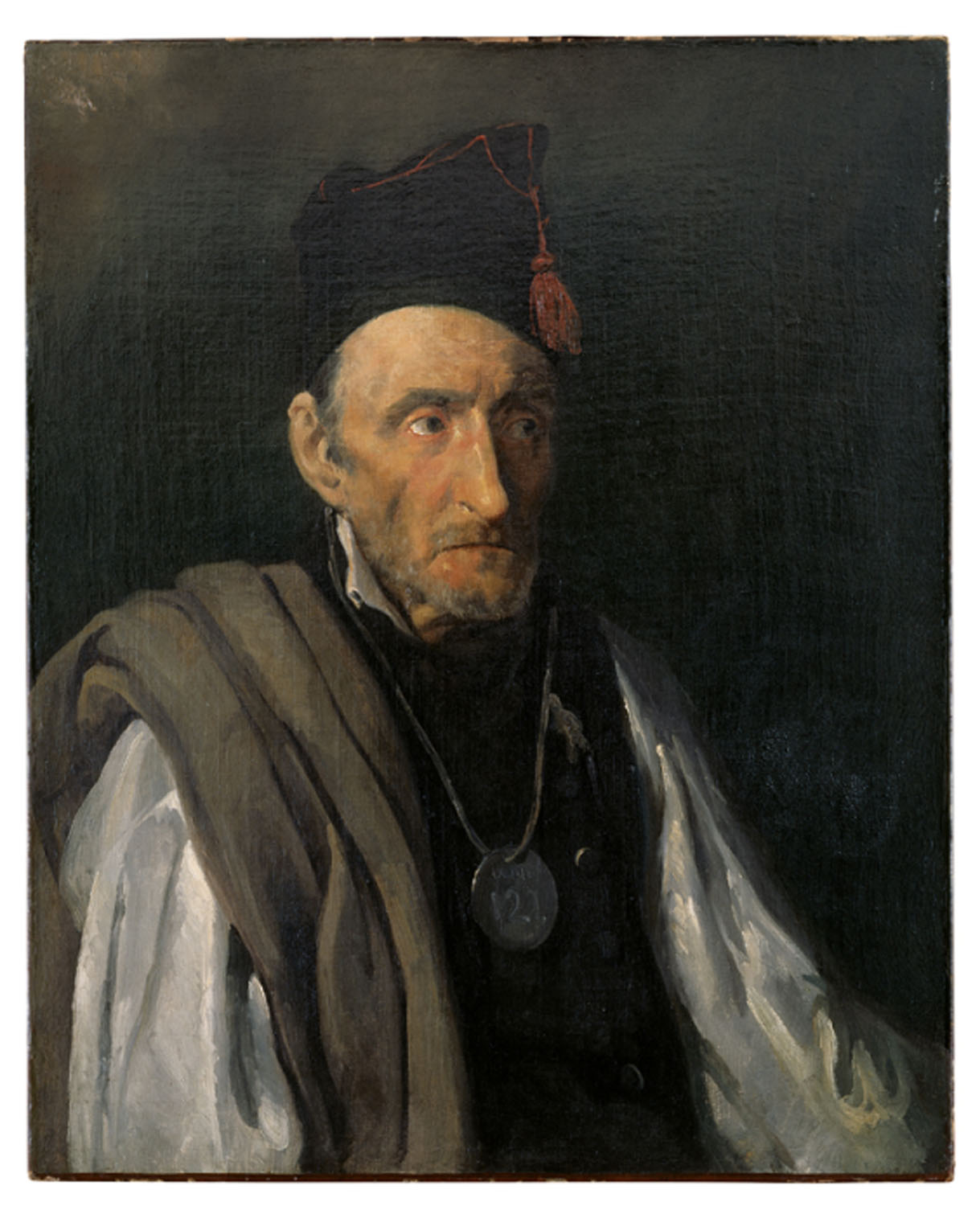
Kristie: Théodore Géricault: A Man Suffering from Delusions of Military Rank
At the Courtauld gallery, a painting that stood out to me the most was ‘A Man Suffering from Delusions of Military Rank’ by Théodore Géricault (1791-1824). This oil painting is one of a few portraits depicting individuals thought to be suffering from mental illnesses, it is unclear why the portraits were made, they were never exhibited in the artist's lifetime. The male figure wears a tasseled police cap that strongly contrasts the hospital gown he wears proudly. The juxtaposition of authority and respect vs fragility and vulnerability creates a haunting portrayal o the conflict betwe the man's external health and internal desires.
The juxtaposition of authority and respect with fragility and vulnerability creates a haunting portrayal of the conflict between the man's external health and internal desires
Kristie, Harrodian History of Art student
It is reflective of the divide between the man's perception of himself and his true condition. I enjoyed seeing this painting up close and being able to zoom in on specific details of the man, such as his gaunt, emaciated cheeks and lost, almost vacant gaze that creates a powerful and moving portrait. Théodore Géricault was part of the Romanticism movement, a movement that originated in the late 18th and early 19th centuries, emphasising emotion, individualism, and the sublime. This is reflective in the emotion evoked in the painting and how Géricault depicts a very individual experience. Seeing this painting in real life allowed me to understand the painting on a deeper level and see the true capabilities and effects of an artist's hand.

Lily: Vincent van Gogh, Peach Trees in Blossom
My personal favourite was ‘Peach Trees in Blossom’ by Vincent van Gogh, as the variety of colour really catches the eye, drawing you in. Van Gogh places complementary colours next to each other, which helps emphasise the vibrancy of the colours, making them really stand out amongst the other paintings. He also adopts an impasto technique, in which the paint is layered thickly onto the canvas, creating amazing texture. This texture is really only seen up close, however, once you notice it, it almost feels as though we are immersed in the painting. The texture is particularly evident around the trees, which helps to capture the moment of wind blowing. The quickness and thickness of the brushstrokes was a practiced technique, which was mainly used to reject Academic art and their illusionistic approach.
Van Gogh adopts an 'impasto' technique, in which the paint is layered thickly onto the canvas, creating amazing texture... it almost feels as though we are immersed in the painting
Lily, Harrodian History of Art student
Post-impressionist artists tend to focus more on the emotion when painting, which explains the slight haziness, created by the loose brushstrokes, in the clouds or on the road. This creates a sense of nostalgia or serenity, which was my first reaction to seeing the painting. The colour, especially, helps to evoke those feelings as they appear refreshing and easy on the eyes. The movement of brushstrokes also helps to add visual interest, as your eyes are never in one place. Furthermore, the depiction of peach blossoms would have been influenced by van Gogh’s interest in Japonisme, which was a collective craze with Japanese art and culture. The variety of elements in the painting, from the row of peach blossoms to the mountain range, is truly beautiful as van Gogh captures them in the moment, unaffected by the chaos of urban life.
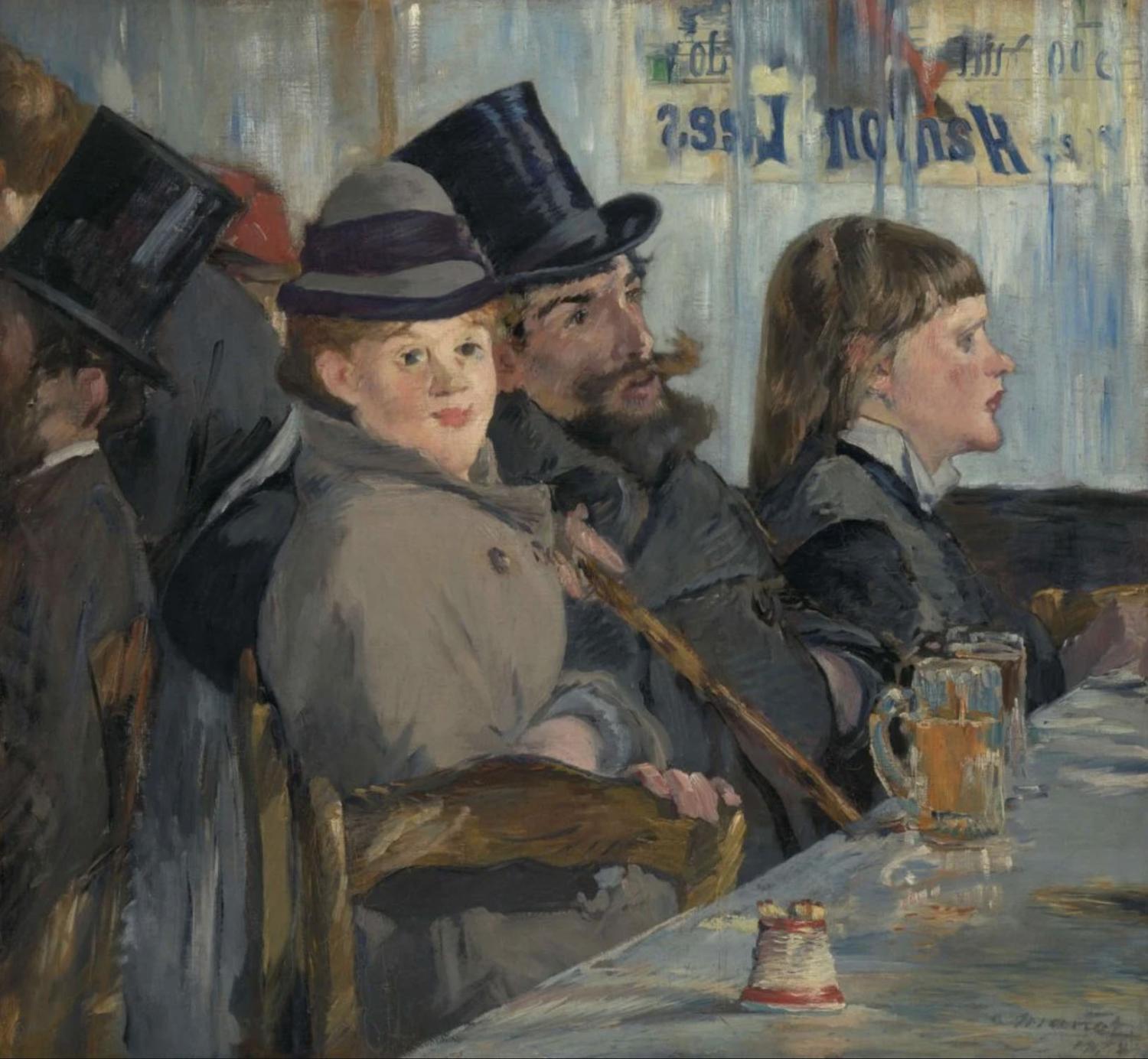
Honor: Edouard Manet - At the Cafe
Seeing Manet’s At the Café in person was unexpectedly touching to me. The painting doesn’t jump out at you with vibrancy or dramatism, instead the quietness of the muted warm colouring harmoniously blends together, the smooth brushstrokes, and the way the female figure’s gaze feels as though she knows something you don’t. What I like about Manet is the way he depicts his female figure’s gazes in the most emotionally interesting ways just through simple changes in the way he paints their eyes.
What I like about Manet is the way he depicts his female figure’s gazes in the most emotionally interesting ways just through simple changes in the way he paints their eyes.
Honor, Harrodian History of Art Student
This female figure is no different, her gaze allows the viewer to feel as though she is contently sitting at a café and is welcoming the viewer in. You get the impression of two people placed in intimately close proximity, but in totally different spaces of thought. It ties in closely with the themes from our 19th-century module as cafés were new public spaces in modern Paris, places meant for socialising, but Manet shows us something different: a kind of emptiness that lurks here, a woman in a social setting, yet her gaze remains on us, she is somewhere else deep in thought. What I liked most was how subtle it is. It isn’t dramatic or flashy in what it is trying to portray, it blends amongst the rest which to me adds to the woman in the painting, she blends in with the rest but there is something about her which stands out. A moment of stillness depicted which is calming and comforting to look at and I found had a profound effect on me as a viewer.


